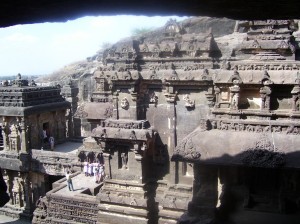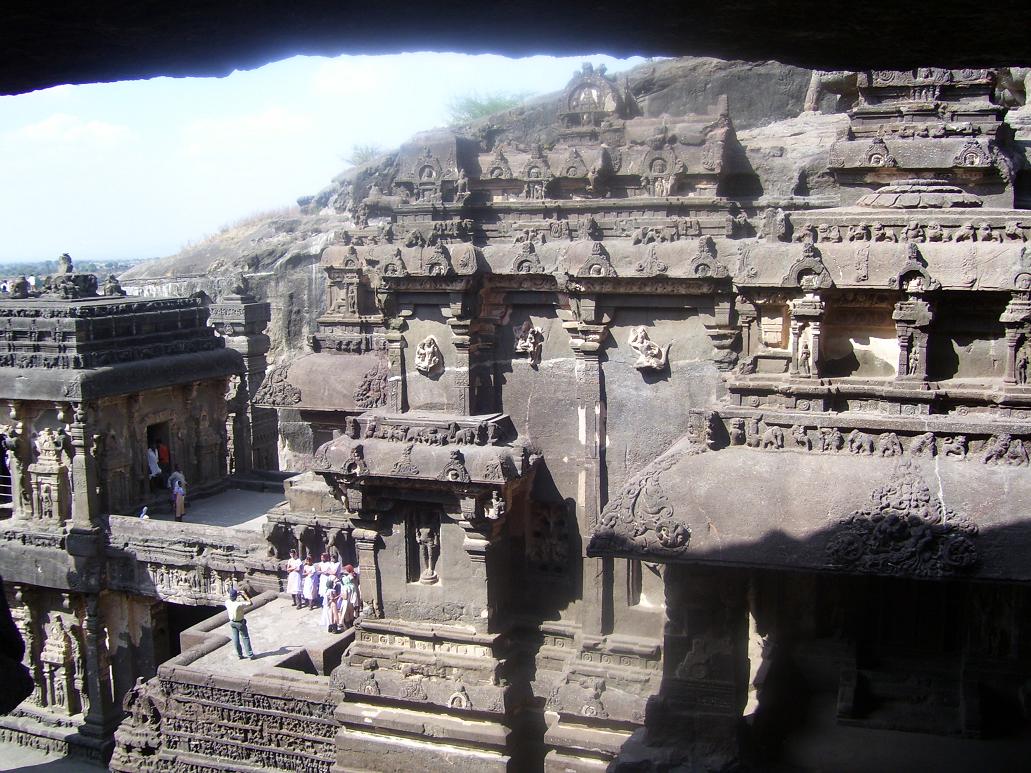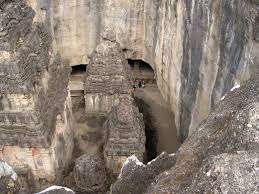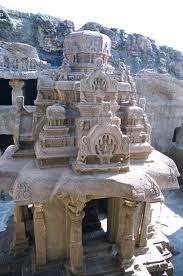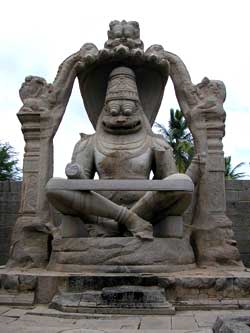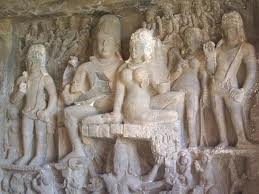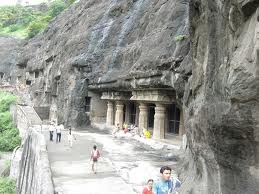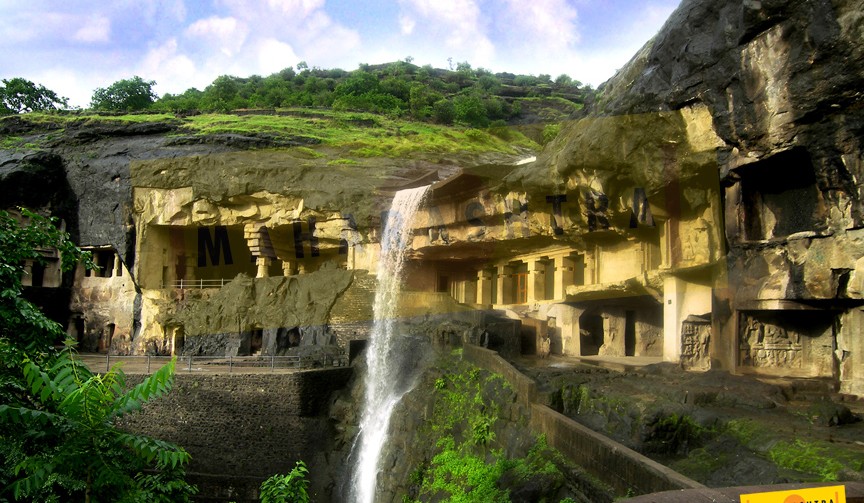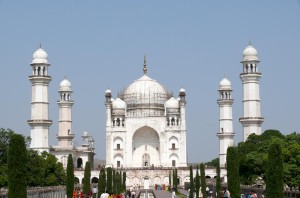India /Maharashtra /Aurangabad /Aurangabad
Sight Address : The Ellora Caves is from Aurangabad Ellora is 30 km. Edit
Detail InformationEdit
The Ellora caves, locally known as ‘Verul Leni’ is located on the Aurangabad-Chalisgaon road at a distance of 30 km north-northwest of Aurangabad, the district headquarters. The name Ellora itself inspires everyone as it represents one of the largest rock-hewn monastic-temple complexes in the entire world. Ellora is also world famous for the largest single monolithic excavation in the world, the great Kailasa (Cave 16). The visit to these caves is enjoyed maximum during monsoon, when every stream is filled with rainwater, and the entire environ is lush green. The monsoon is not only a season of rains in this part, the local visitors are attracted to visit these ideal locations to have a glimpse of the mother nature in full bloom. The caves are hewn out of the volcanic basaltic formation of Maharashtra, known as ‘Deccan Trap’, the term trap being of Scandinavian origin representing the step like formation of the volcanic deposits. The rock formation, on weathering has given rise to the appearance of terraces with flat summits. At Ellora, one can also have a glimpse of the channels (near Cave 32) through which the volcanic lava once flowed. These channels, due to overheating, have a characteristic brownish red colour. Similar rock was used in the construction of the Grishneshwar Temple nearby and also utilised for the flooring of the pathways at Bibi-ka-Maqbara. The hills in which the caves are hewn, forms part of the Sahyadri ranges of the Deccan and dated to the Cretaceous era of the Geological time scale (about 65 million years ago). The hills rise abruptly from the surrounding plains on the south and west, the western surface being extensively utilised for hewing the cave complexes. The hill also supports several streams, the prominent among them being the Elaganga, which drains into the Shiv, a stream of the Godavari river system. The Elaganga is in its full vigour during the monsoon, when the overflowing waters of a barrage in the upstream near Mahismati allows the gushing waters to land at “Sita-ki-nahani” near Cave 29 as a crashing waterfall. The volcanic lava flowed during different periods, gave rise to extensive horizontal flows alternating with vesicular trap beds. The vesicular traps formed the upper portion of each of the massive trap beds. The different lava flows also gave rise to vertical as well as horizontal joints in the rock formation. Depending upon the nature and mineralogical content of the lava flow, the rock formations also varied in character and texture, giving rise to various qualities like coarse grained, fine grained formations. The ancient builders at Ellora, like other places, particularly chose the fine grained formations of the Deccan trap, ideal for sculpting and rock hewing. In addition to this, the ancient builders also traced the horizontal and vertical joints in the rock formation to minimise the labour and time during excavation and rock splitting. The basaltic rock is also ideal for rock hewing, as they are soft during the initial excavation and hardens on exposure to environment. The epitome of ancient Indian rock-cut architecture, these caves were chipped out laboriously over five centuries by generations of Buddhist, Hindu and Jain monks. Monasteries, chapels,temples – the caves served every purpose,and they were stylishly embellished with a profusion of remarkably detailed sculptures. Unlike the caves at Ajanta, which are carved into a sheer rock face, the Ellora caves line a 2km-long escarpment, the gentle slope of which allowed architects to build elaborate courtyards in front of the shrines, and render them with sculptures of a surreal quality. Ellora has 34 caves in all: 12 Buddhist (AD 600–800), 17 Hindu (AD 600–900) and five Jain (AD 800–1000). The grandest, however, is the awesome Kailasa Temple (Cave 16), the world’s largest monolithic sculpture, hewn top to bottom against a rocky slope by 7000 labourers over a 150-year period. Dedicated to Lord Shiva, it is clearly among the best that ancient Indian architecture has to offer.
HistoryEdit
The Ellora has 34 caves in all: 12 Buddhist (AD 600–800), 17 Hindu (AD 600–900) and five Jain (AD 800–1000). The grandest, however, is the awesome Kailasa Temple (Cave 16), the world’s largest monolithic sculpture, hewn top to bottom against a rocky slope by 7000 labourers over a 150-year period. Dedicated to Lord Shiva, it is clearly among the best that ancient Indian architecture has to offer. The epitome of ancient Indian rock-cut architecture, these caves were chipped out laboriously over five centuries by generations of Buddhist, Hindu and Jain monks. Monasteries, chapels,temples – the caves served every purpose,and they were stylishly embellished with a profusion of remarkably detailed sculptures.Unlike the caves at Ajanta (p 772 ), which are carved into a sheer rock face, the Ellora caves line a 2km-long escarpment, the gentle slope of which allowed architects to build elaborate courtyards in front of the shrines,and render them with sculptures of a surreal quality.
Must SeeEdit
Attraction
Visiting TimeEdit
Sunrise to 10:00 pm
Closed OnEdit
N.A.
Best Season to VisitEdit
October to March.
Best Time To VisitEdit
Morning, Afternoon.
Time Required for SightseeingEdit
N.A.
Ticket Required : Yes Edit
Individual National Adult Rs. : Rs.10
Kids Rs. : N.A.
Individual Foreigner Adult Rs. : Rs.250
Kids Rs. : N.A.
Still Photo Camera Rs. : N.A.
Video Camera Rs. : Rs. 25
Guide Required : No Edit
Approximate cost: N.A.
Dress Code (If Any) : No Edit
Dress Require: N.A.
Restaurants NearbyAdd / Edit
- Hotel Kailash ; Ellora Caves,Auragabad District, Ellora 431102, India ; Ph/M – 02437 244 446 ; Food Serve – N.A.
How to ReachEdit
Taxi : The taxi stand is next to the MSRTC bus stand; share jeeps also depart from here for destinations around Aurangabad. Expect to pay Rs.600 for a full-day tour in a rickshaw, or Rs.900 in a taxi.
Bus : MSRTC also operates an intra-city bus service called ‘Aurangabad City Bus’ which connects different parts of the city together along with connecting the city to its nearby suburbs. The bus system is even more complicated for those who do not speak the local Marathi language, which equates to just about every foreign visitor here. Your best bet is to ask someone in your hotel before you leave what bus you would need to take to get to your planned destination. If you can track down this bus and get on as well as let the driver know your destination, then buses here are very convenient and inexpensive at just a couple of rupees per trip.
Train : Aurangabad’s train station (Station Rd East) is not on a main line, but two heavily-booked trains, the Tapovan Express (2nd class/chair ₹102/338, 7½ hours, 2.35pm) and the Janshatabdi Express (2nd class/chair ₹127/420, 6½ hours, 6am) run direct to/from Mumbai. For Hyderabad (Secunderabad), take the Devagiri Express (sleeper/2AC ₹224/822, 10 hours,4.05am). To reach northern or eastern India,take a bus to Jalgaon and board a train there.
Air : Aurangabad Airport, popularly known as the Chikalthana airport is the main domestic airport here. It is situated 10 km east of the city. Both Indian Airlines and Jet Airways have a daily flight to Mumbai (Bombay). The airport is 10km east of town. En route are the offices of Indian Airlines (2485241; Jalna Rd) and Jet Airways (2441392; Jalna Rd) There are daily flights to Delhi, with a stopover in Mumbai. Fares start from around Rs.1500. Taxis are available to and from airport.
Others : N.A.
Things to CarryEdit
Carry bottle of drinking water and some food.
Safety / WarningEdit
Eat safely (no street stall foods, no buffets, eat fruits/veg that can be peeled and well-cooked food, drink sealed bottled water). Use sun screen/mosquito repellent, put a hat and sunglasses on your child.Wear closed shoes, not sandals.
HelplineEdit
Ambulance 108
Fire 101
Police Stations 100
Railway Enquiry 131
Tourist Information Office 0240-2331218
